You can’t take it with you
After the Ruthven Museums building officially closed its doors to the public last year, Michigan Today explored its deserted halls, cupboards, and cabinets to find a trove of fascinating and forgotten artifacts. A renovated Ruthven will be home to classrooms, labs, and offices for the University’s central administration staff. Ruthven’s former occupants now live in the new Biological Sciences Building.
-
Notions and potions
The origins of the University’s natural history collections date to 1837 when the state legislature created the University of Michigan. The charter gave the Board of Regents the “authority to spend so much of the University fund to purchase a ‘Cabinet of Natural History.’”
Pictured here is a different kind of cabinet: one that housed some mysterious potions, oil, and rubber gloves in an artichoke jar.
-
A work in progress
Here’s a sight you don’t often see in the normal course of business hours.
-
Vanished!
We wish there was a more exciting story to tell about this photo. Alas, no heist to report. Just a move in progress.
-
Occasional papers
The University’s collections have inspired generations of students, alumni, schoolchildren, families, and other visitors to discover the excitement of science and the natural world. But the “occasional papers” shown here best served scholars behind the scenes.
-
Lights on, nobody’s home
And for our next exhibit: “Abandoned Office.”
-
Destination: A2
Long-lost scraps of paper, notes, and other ephemera leave a haunting impression of long-ago adventures, expeditions, and excursions.
-
It’s another language
We can’t pretend to know what this chart is for, and we can only guess how long it’s been taped to the wall in someone’s laboratory.
-
It takes all kinds
One University scientist expressed unique anti-war sentiment in a wacky sticker on their office door. Come to think of it, slugs are pretty peaceful creatures. Maybe it’s not so wacky after all.
-
Gone fishing
Mysteries abound in an empty and deserted museum building. Each drawer holds secrets, discoveries, folios — even “fish serials…”
-
Turn it up to 11!
Who can tell us what the Volt Meter is used for? There’s just something indescribably cool about those knobs and switches, right?
-
It’s not easy being green
These tools of the trade have seen better days.
-
A pop of color
Stacked in the back halls of Ruthven, we found this cluster of colorful chairs. They, too, are relics of a sort!
-
Hang it up
Someone definitely knew how to leave their past behind … on to new adventures.

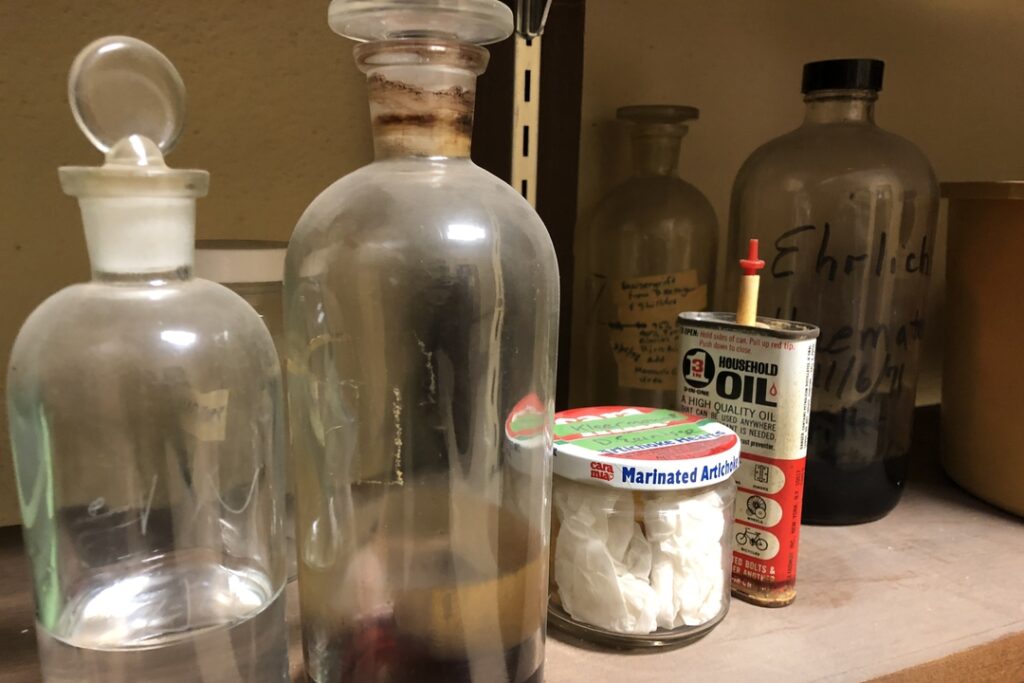
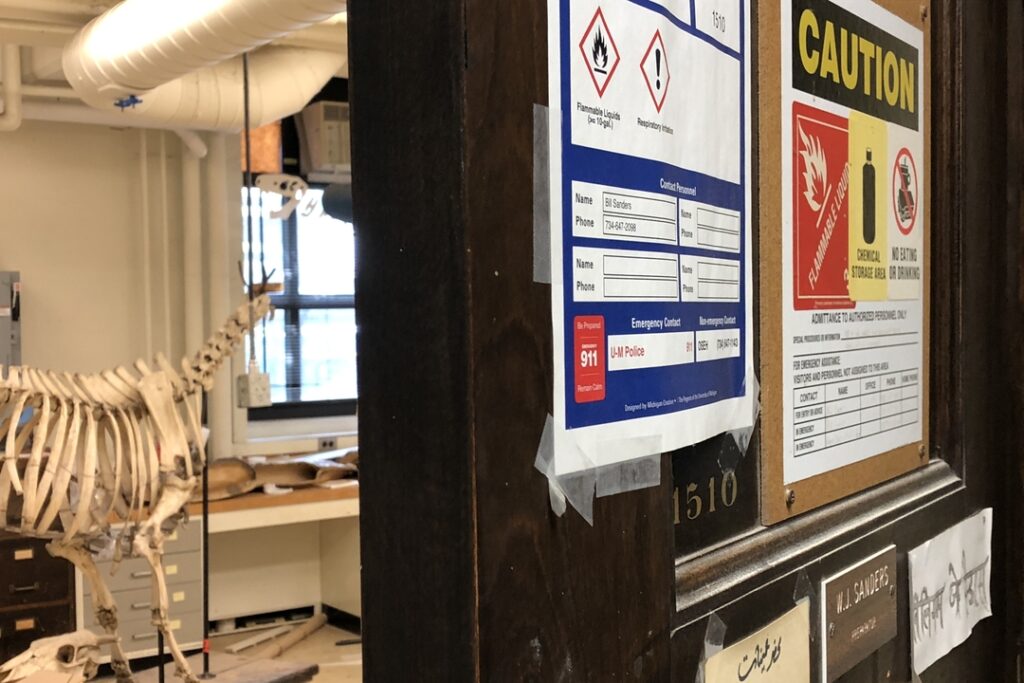
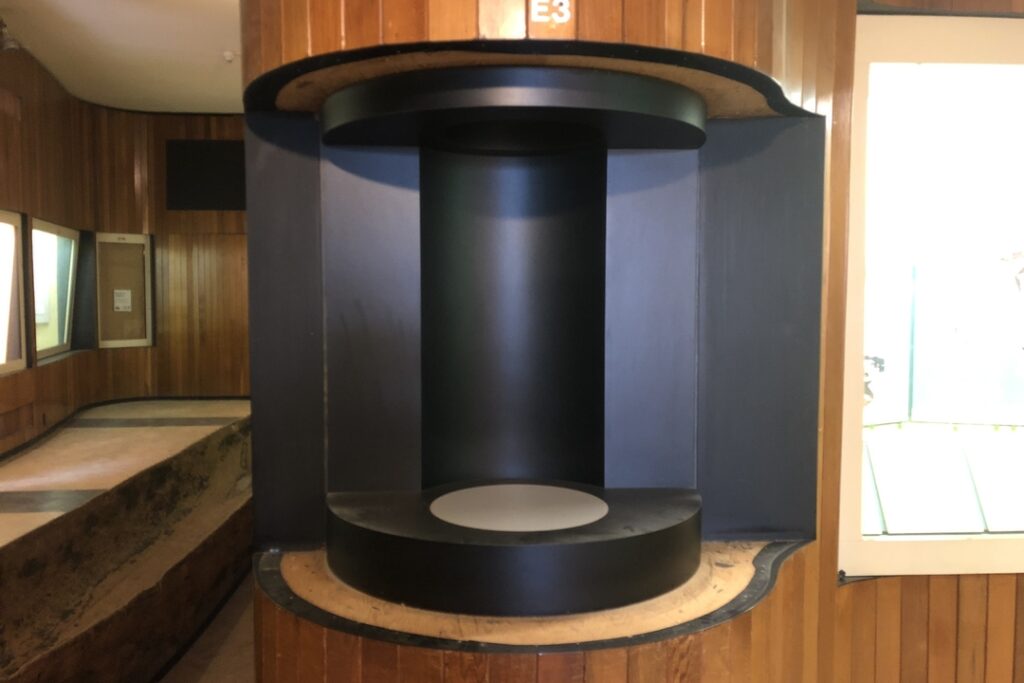
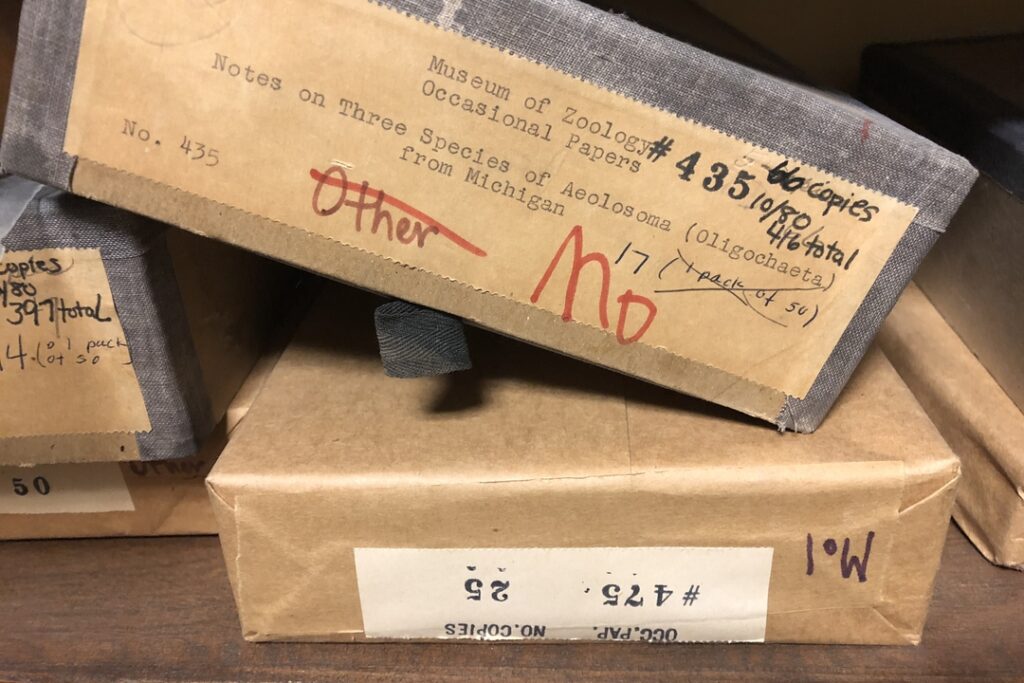


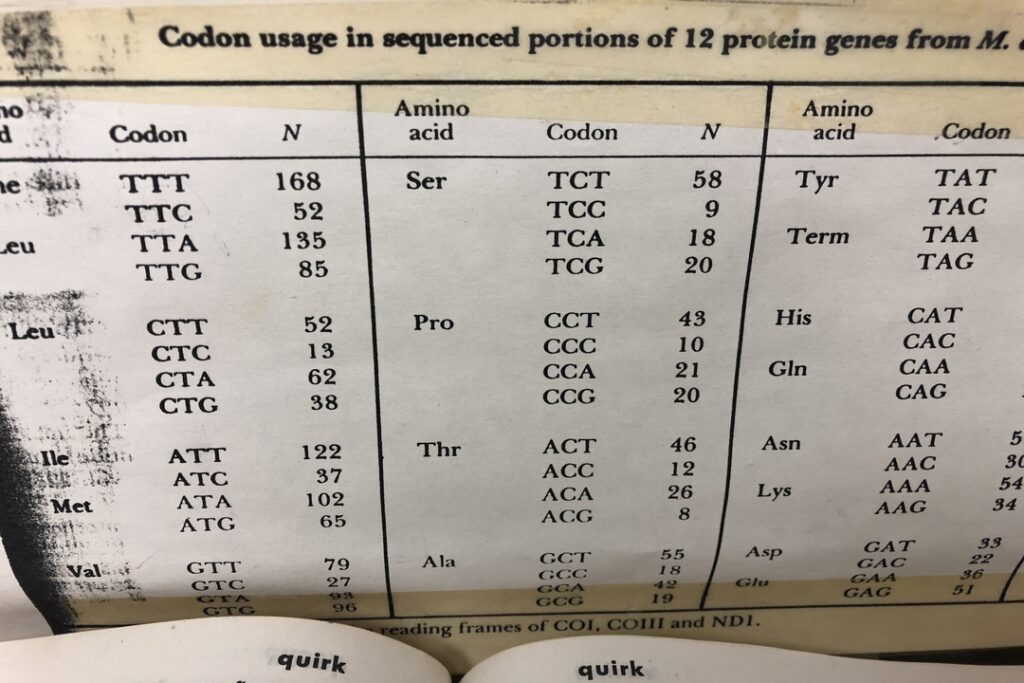

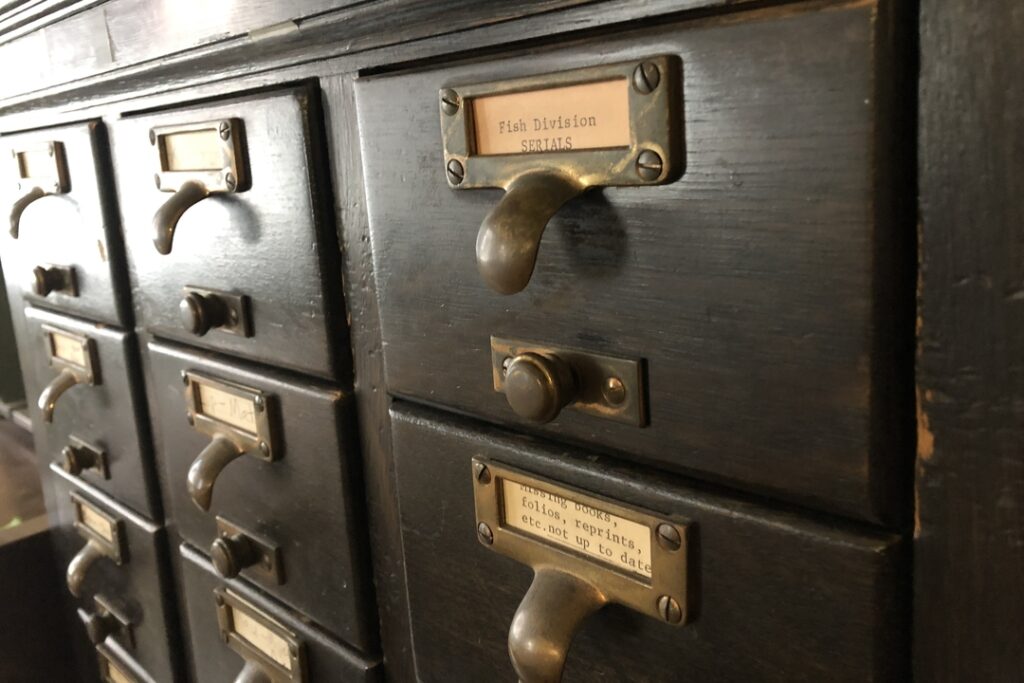
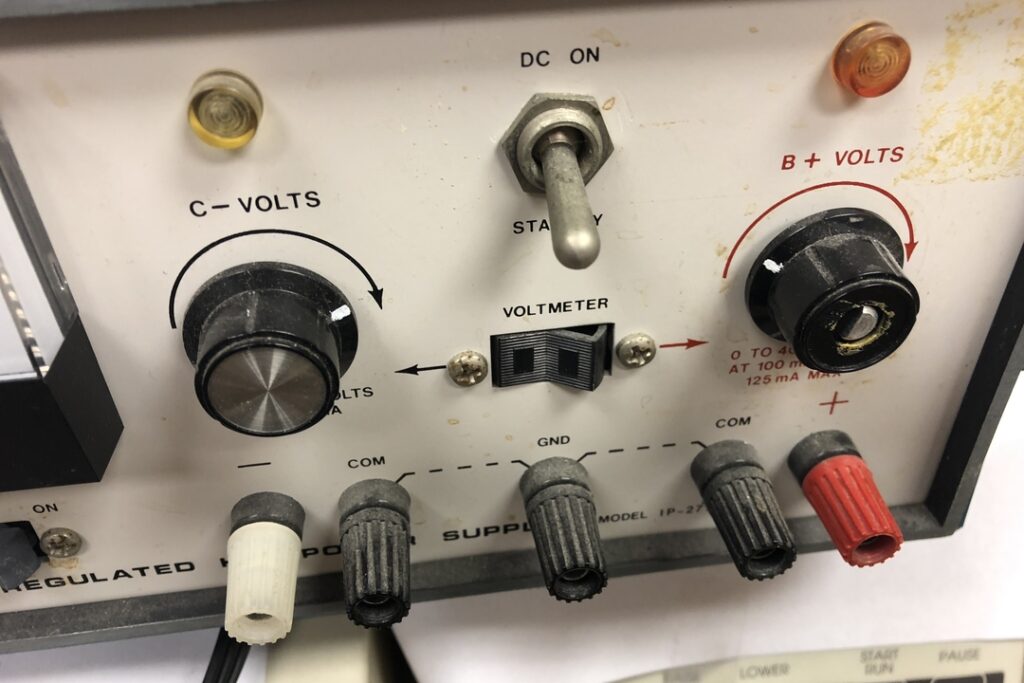
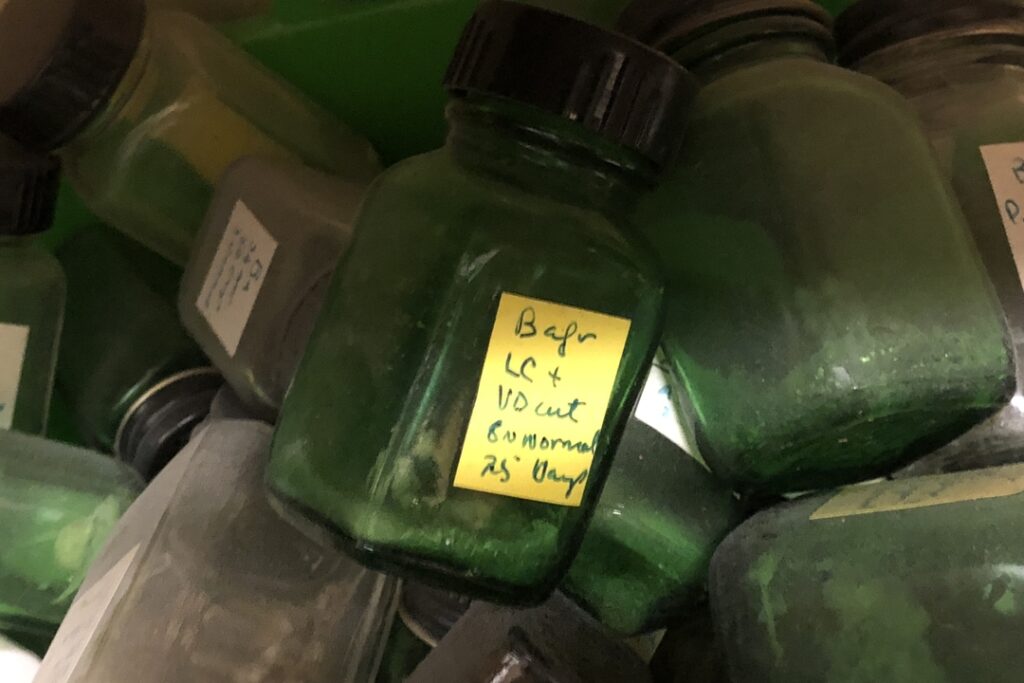
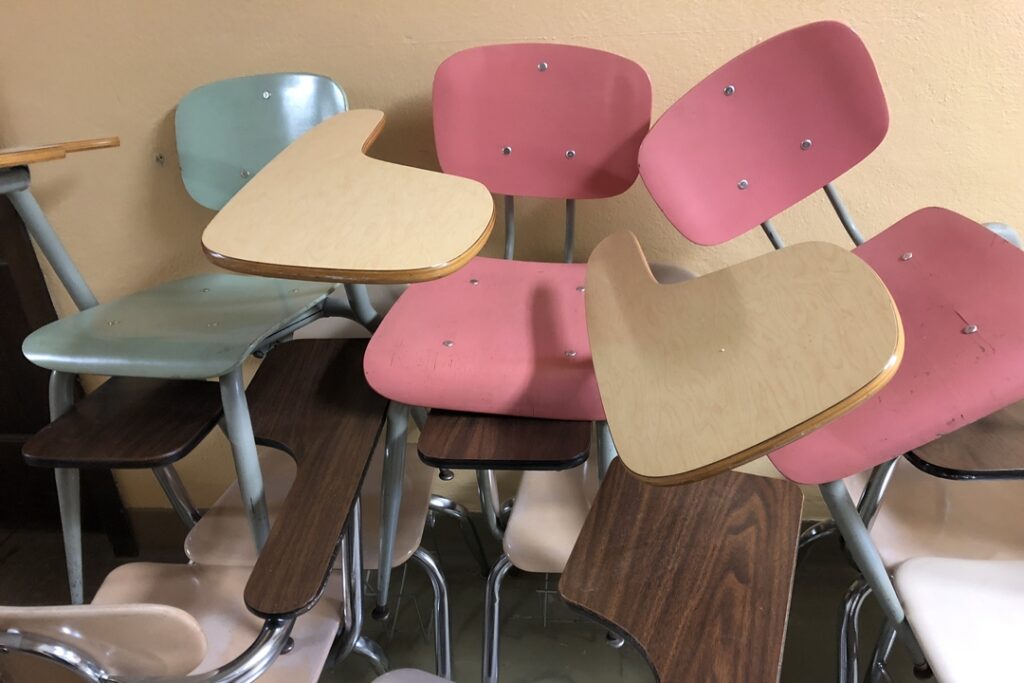


Doug Ensor - Ph.D. ‘82
The “voltmeter” is instead a power supply, I believe from what I can see, it was made by Heathkit. It is called a High Voltage Supply because it provides higher plate voltages used in vacuum tubes in radios and instrumentation before the transistor era, as well as the voltages needed to light them up (filament supply).
Reply
holdship
Thanks for the explanation! I just love how it looks.
Reply
Robert LaJeunesse - MSE EE 1976
Now I know where my Property Disposition sale Heathkit IP-2717 power supply came from. Wondering if it was used for some electrophoresis experiments many years ago, when it actually worked. And yes, I brought it back to usability.
Reply
holdship
This is why I love Michigan Today.
Reply
Trena Brannon
“LOVE” comment!
Reply
Carl Freire - '90 M.A.
“Fish (Division) serials” are, alas, “serial” publications (meaning magazines and journals) that had been subscribed to by, presumably, the Fish Division. Boringly, there are no “As the Aquarium Turns” or “All My Fingerlings” tales to be found here . . . at least not in the conventional sense. An ichthyologist might have a different perspective.
Reply
Elizabeth Rodriguiz
Picture 7: “It’s Another Language!” Those are amino acids and their genetic codes.
Reply
Karen Davis
Surely by now codon usage tables are no mystery to any college student, although normally expressed for mRNA (with Uracil replacing Thymine); since the genus is given as “M.” my guess is that these data are from studies of genus Mus (mice), and indeed may date as far back as the mid-1960s.
Reply
Dan Erickson
I’m glad someone went to shoot some photos, but it would have been much more productive, and interesting to have been escorted with someone more familiar with the building (not to mention museums and science). Some of the cooler things you missed were the old steel bank-style vault door in the basement, with its combination lock, or the attic with its old wooden catwalks, or the “Georama” that was hidden between two walls (something the demolition crew will be surprised to find), and the multiple sub-basements where the fish were stored, etc.
Reply